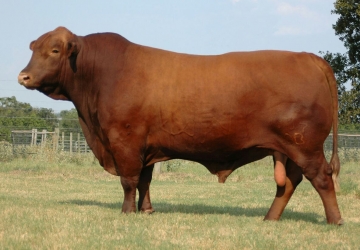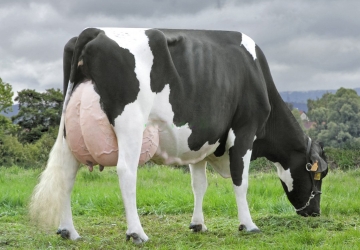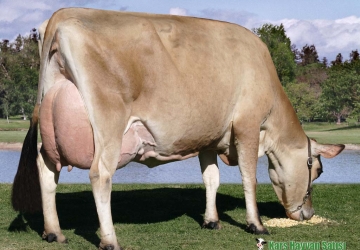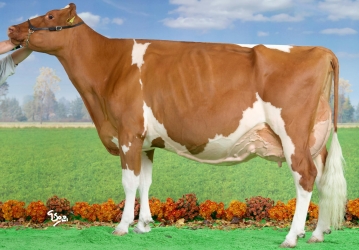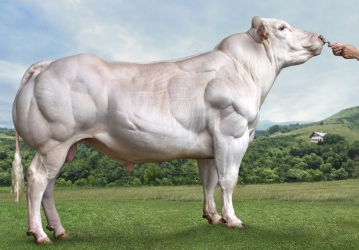
Belgian Blue is a Belgian origin. The sculptural, intense muscle image of the Belgian blueprint is also known as the double muscles. It is a double muscular phenotypical state and results in hyperplasia of increased number of muscle cells (hypertrophy) instead of increase in muscle cell volume. This hereditary condition is also present in "Piedmontese" cattle. Both types of cattle have superior abilities to translate the meat into the shell, which ensures that the fat content of such cattle is low. Although the Belgian blue has taken its name from the typical gray-blue alaca appearance, its hairs may vary from white to gray.
There is a natural mutation in the gene encoding the Belgian blueprint that encodes myostatin ("myo" = muscle and "statin" = stop) protein. Myostatin is a protein that restricts muscle growth. Because this mutation affects the fat deposition at the same time, the meat of such cattle becomes fat-free. The truncated myostatin gene can not function at normal capacity and results in an accelerated muscle development in the animal. Muscle growth is mainly caused by hypertrophy hyperplasia physiological changes of the animal&39;s muscle cells (strands). This type of development (hyperplasia) is seen in the fetus when the mother is pregnant, so that the offspring usually have about twice as many muscle cells. Moreover, the birth weight of the offspring is much higher than the birth weights of the offspring of normal cattle.
Belgian blue cattle have a higher conversion rate than other cattle. The higher this ratio is, the higher the protein intake and the decreased fat composition in weight gain. However, because their bones and weights are the same as other cattle, they have a higher muscle / bone ratio than other cattle. They have a muscle yield of about & gt; 49&49; greater than other cattle. For higher muscle yield in this breed, a more protein weight diet is needed to compensate for this altered weight gain composition. It requires such high-energy feed during fattening and can not provide the desired fattening performance if a high-fiber diet is provided.
This double-muscled breed is in superior carcass quality. However, due to the low fat content, the marbling of the meat (texturization) is reduced and this causes the meat to lose its softness. On the other hand, there are also some advocates of the absence of a change in the mildness of the Belgian blue because it is composed of numerous and short (small) muscle fibers. The amount of collagen in the meat of Belgian Blues is also low, which increases the protein quality by increasing the yield of amino acids.


